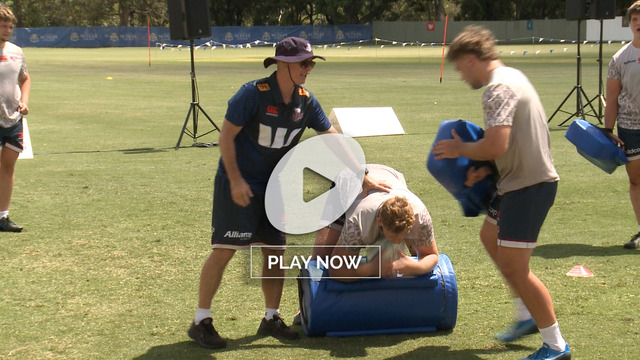Whether they see themselves as strict on-field policemen or helpful teacher-counsellors, or a mix of both, referees in Rugby are there to implement a set of rules which allow the game to be played, and hopefully enhance it by their own contribution.
Referees love players who follow the rules and help them apply structure to key areas of the game. Nowhere is this truer than at the breakdown, a tortured aspect of Rugby which includes almost 40 possible offences by both sides.
The revised 2020 guidelines https://passport.world.rugby/injury-prevention-and-risk-management/breakdown-ready/breakdown-laws-dos-and-don-ts/, designed to both clean up and speed up ruck resolutions, show just how complex and detailed the referee’s work around the breakdown has become, and how many different pieces of information he or she has to digest in only five or six seconds of action.
For that reason, officials tend to reward the players who conspicuously and obviously follow the rules, and make their life easier. They may do it consciously or unconsciously (it’s not hard to detect the ref congratulating a player for an accurate or obedient action over the ref-mike), but they do it all the same.
For defensive players in and around the tackle area, the challenge is to spoil and disrupt effectively while showing that they are following the rules. One of the techniques which has evolved to fit this formula is the ‘fake pilfer’, and it was amply illustrated in the recent Super Rugby Pacific match between the Chiefs from New Zealand, and the Queensland Reds from Australia.
The Reds had to make a colossal number of tackles (220), which meant they had to look squeaky-clean at the breakdown in order not to be penalized out of the game. Queensland number 7 Fraser McReight proved to especially skilled at creating a spirit of co-operation or obedience to the rules being implemented by Kiwi official Paul Williams, while doing his job as the primary spoiler of clean, quick ball for the opponent.
Here is the basic scenario:

As soon as the ball reaches that ‘borderline’ situation where it might be considered level with the last foot, and hence out of the ruck by the referee, Fraser McReight advances to pick it up. He takes a peek at Paul Williams and backs out, but look at what he has achieved with the fake pilfer.
The Reds’ open-side has blocked the route for a break up the middle by Chiefs’ scrum-half Cortez Ratima, and Ratima has to take three steps away from the ruck to escape his influence before passing. The total time taken between the ball-carrier hitting the deck and the halfback releasing the ball is around five-and-a-half seconds, which represents ‘slow ball’ for the next phase of attack.
It was a consistent theme on defence:
First Reds’ number 8 Seru Uru counter-rucks to collapse the cleanout, then hooker Richie Asiata dips over the top to force Ratima to become a support player at the ruck instead of a passer from the base. Finally, McReight performs the fake pilfer in order to demand another yet another re-ruck by the Chiefs. The breakdown takes over 10 seconds for the ball to emerge.
The manoeuvre is especially useful after a break has just been made:

Wingman Emoni Narawa has made a long break down the right, and McReight’s fake pilfer is both entirely ‘borderline’ legal, while forcing a second and third man to commit to the cleanout. The recycling of the ball takes eight seconds, and that is enough time for the Reds’ D to get back in shape for the next play:

Just before half-time, McReight’s overt show of listening to, and obeying the referee’s instructions bore fruit in one of the 50/50 decisions which so often have to be made after the tackle:
Queensland number 12 James O’Connor could be penalized for dropping his hands down ahead of the ball on the pilfer, but Paul Williams notices the off-balance cleanout attempt by Chiefs’ number 8 Simon Parker instead:
“You’ve gone straight off your feet. Control your feet, control your height.”
The Reds kicked for the corner from the penalty and scored a try from the following lineout to go into the break on level terms at 12-12.
Consciously or unconsciously, either in the forefront or the darker recesses of Paul Williams’ mind, the perception had probably formed that Queensland were ‘following the rules’ at the breakdown and making the game easier to officiate for him. The Reds only conceded six penalties in the entire match despite the Chiefs enjoying 27 minutes of possession on attack and making 13 entries to the Queensland 22.
Summary
The ‘fake pilfers’ initiated by Fraser McReight were an important part of creating that emotional climate in the game. The Queensland number 7 would lay hands on a marginal ball – half in, half out of the ruck – turn to the referee and ask the question, releasing immediately when he got ‘No’ for an answer. “Details matter. It’s worth waiting to get it right” [Steve Jobs].













.jpg)
.jpg)





_no_button.jpg)

